Framboise |
|||||||||||||||||||||||||
 |
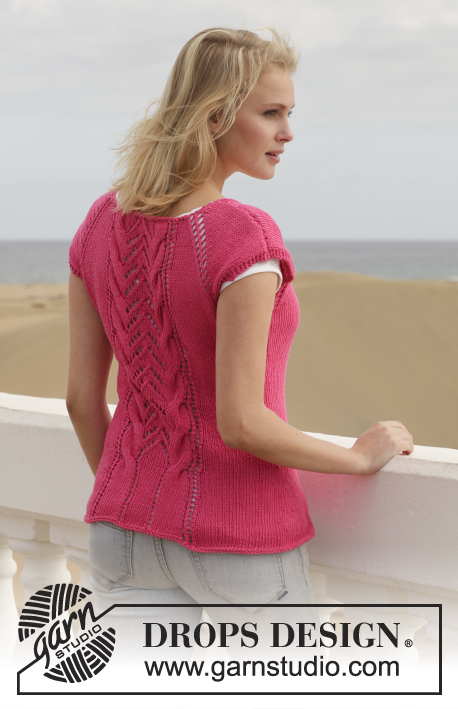 |
||||||||||||||||||||||||
Knitted DROPS jacket with cables and lace pattern in ”Cotton Light”. Size: S - XXXL.
DROPS 154-19 |
|||||||||||||||||||||||||
|
GARTER ST (back and forth on needle): K all rows. 1 ridge = 2 rows K. PATTERN: See diagrams A.1-A.7. The diagrams show all rows in pattern seen from RS. DECREASE TIP: Dec from RS. Dec as follows before 1st and 3rd marker: Work until 2 sts remain before marker, slip 1 st as if to K, K 1, psso. Dec as follows after 2nd and 4th marker: K 2 tog. INCREASE TIP: Inc from RS. Inc as follows before 1st and 3rd marker: Work sts until marker, make 1 YO. Inc as follows after 2nd and 4th marker: Work sts until marker, make 1 YO. On next row work YOs twisted to avoid holes. BUTTONHOLES: Dec for buttonholes on right band. 1 buttonhole = K tog second and third st from edge and make 1 YO. Dec for buttonholes when piece measures: SIZE S: 5, 11, 17, 23, 29, 35 and 41 cm SIZE M: 7, 13, 19, 25, 31, 37 and 43 cm SIZE L: 8, 14, 20, 26, 32, 39 and 45 cm SIZE XL: 8, 14, 20, 26, 32, 39 and 45 cm SIZE XXL: 5, 12, 19, 26, 33, 40 and 47 cm SIZE XXXL: 7, 14, 21, 28, 35, 42 and 49 cm ---------------------------------------------------------- BODY: Worked back and forth on circular needle to make room for all the sts. Cast on 184-204-222-232-268-292 sts (incl 5 band sts in each side) on circular needle size 3.5 mm with Cotton Light. Work 1 ridge in GARTER ST - see explanation above. Switch to circular needle size 4 mm. Then work first row as follows from RS: Work 5 sts in garter st (= band), A.5 (= 8 sts), stocking st over the next 60-70-79-84-102-114 sts, A.1 (= 38 sts), stocking st over the next 60-70-79-84-102-114 sts, A.5 (= 8 sts), finish with 5 sts in garter st. REMEMBER THE KNITTING TENSION! Continue in garter st, with pattern and in stocking st until piece measures 6 cm. NOTE: A.2 (= 38 sts) is worked over A.1 when A.1 has been worked 1 time vertically (work pattern A.2 until finished measurements). Work pattern A.5 until finished measurements. Remember BUTTONHOLES on right band. Now insert 4 markers in the piece as follows: Work 5 sts in garter st, A.5, 32-37-41-44-53-59 sts in stocking st, insert 1st marker, 3 sts in stocking st, insert 2nd marker, 25-30-35-37-46-52 sts in stocking st, A.2, 25-30-35-37-46-52 sts in stocking st, insert 3rd marker, 3 sts in stocking st, insert 4th marker, 32-37-41-44-53-59 sts in stocking st, A.5, finish with 5 band sts in garter st. Move the markers upwards when working. On next row from RS dec 1 st before 1st and 3rd marker and after 2nd and 4th marker (= 4 sts dec) – see explanation above. I.e. there are 3 sts between every dec the entire way upwards. Repeat dec every 1½-1½-1½-1½-1-1 cm 6-6-7-6-8-9 more times (= 7-7-8-7-9-10 times in total) AT THE SAME TIME on 2nd-4th and 6th dec, dec after A.5 (right front piece), in each side of A.2 and before A.5 (left front piece), i.e. work 3 sts tog instead of 2 sts (= 8 sts dec every other dec) = 144-164-178-192-220-240 sts remain on needle. When piece measures 25-25-25-26-26-26 cm, inc on next row from RS 1 st at every marker (= 4 sts inc) – see explanation above = 148-168-182-196-224-244 sts. Then inc differently in each size: SIZE S: Repeat inc every 1½ cm 5 more times (= 6 times in total) AT THE SAME TIME on 2nd and 4th inc, inc 1 st after A.5 (right front piece), in each side of A.2 and before A.5 (left front piece), inc by making a YO straight before/after A.2/A.5, work YO twisted on next row = 176 sts on needle. SIZE M-L-XL-XXL-XXL: Repeat inc every 1½ cm 5-5-6-6-7 more times (= 6-6-7-7-8 times in total) AT THE SAME TIME on 2nd-4th and 6th inc, inc 1 st after A.5 (right front piece), in each side of A.2 and before A.5 (left front piece), inc by making a YO straight before/after A.2/A.5, work YO twisted on next row (= 8 sts inc on every other inc) = 200-214-232-260-284 sts on needle. When piece measures 37-38-39-40-41-42 cm, work next row from RS as follows: 5 band sts in garter st, A.5, stocking st over the next 24-30-34-38-45-51 sts, 14 sts in garter st, 18-24-27-32-39-45 sts in stocking st, A.2 (= 38 sts), 18-24-27-32-39-45 sts in stocking st, 14 sts in garter st, stocking st over the next 24-30-34-38-45-51 sts, A.5, finish with 5 sts in garter st. Repeat this row 1 more time from WS. Then (from RS) cast off for armholes as follows: 5 band sts in garter st, A.5, stocking st over the next 24-30-34-38-45-51 sts, 3 sts in garter st, cast off the next 8 sts, 3 sts in garter st, 18-24-27-32-39-45 sts in stocking st, A.2 (= 38 sts), 18-24-27-32-39-45 sts in stocking st, 3 sts in garter st, cast off the next 8 sts, 3 sts in garter st, stocking st over the next 24-30-34-38-45-51 sts, A.5, finish with 5 sts in garter st = 80-92-98-108-122-134 sts on back piece and 40-46-50-54-61-67 sts on each front piece and finish each part separately. LEFT FRONT PIECE: = 40-46-50-54-61-67 sts. Work from WS. 5 sts in garter st, A.5 (= 8 sts), 24-30-34-38-45-51 sts in stocking st, finish with 3 sts in garter st. On next row (= RS) work the first 2 sts in stocking st twisted tog after the 3 sts in garter st for armhole, repeat dec on every row from RS 0-3-5-5-6-7 more times (= 1-4-6-6-7-8 times in total) = 39-42-44-48-54-59 sts remain on needle. Work next row from RS as follows: 3 sts in garter st, pattern A.4 (= 4 sts) (NOTE: Pattern A.4 is displaced 1 st on every row from RS in towards middle AT THE SAME TIME inc 1 st in A.4 for sleeve on every row from RS (as shown in diagram)), 19-22-24-28-34-39 sts in stocking st, A.5, finish with 5 sts in garter st. Continue with A.4 until 13-13-13-12-7-4 sts for sleeve have been inc (inc 1 st on every row from RS, SEE YO in diagram) = 52-55-57-60-61-63 sts on needle. Then work A.7 over A.4 until finished measurements. Continue with pattern, in stocking st and in garter st upwards until piece measures 40-42-44-44-46-48 cm. Then on next row from WS work 1 ridge over the first 16-16-17-17-18-18 sts, work the other sts as before. Then cast off the first 14-14-15-15-16-16 sts for neck = 38-41-42-45-45-47 sts remain on needle. Then work in garter st over the 2 outermost sts towards the neck, in stocking st and with pattern as before AT THE SAME TIME dec sts at beg of every row from neck (= WS) inside the 2 sts in garter st as follows: K 2 tog (= 1 st dec), repeat dec 8 more times (= 9 times in total) = 29-32-33-36-36-38 sts remain on shoulder (after all inc for sleeve). Work in stocking st and garter st until piece measures 54-56-58-60-62-64 cm. Work 1 ridge in garter st. Loosely cast off. RIGHT FRONT PIECE: Work as left front piece but dec for armhole before 3 sts in garter st by K 2 tog, and cast off for neck at beg of row from RS. REMEMBER BUTTONHOLES! Work diagram A.3 and A.6 instead of A.4 and A.7. Note, the 2 yo in chart A.3 works opposite on next row, i.e P the 1st yo twisted, P the 2nd yo, i.e the 1 st yo will be a st, the 2nd yo will also be a st but will create a hole. BACK PIECE: = 80-92-98-108-122-134 sts. Dec for armholes as on front piece = 78-84-88-96-108-118 sts remain on needle. Work next row from RS as follows: 3 sts in garter st, A.3 over the next 4 sts (A.3 is displaced in towards middle), 13-16-18-22-28-33 sts in stocking st, A.2 over the middle 38 sts as before, 13-16-18-22-28-33 sts in stocking st, A.4 over the next 4 sts, finish with 3 sts in garter st. NOTE: A.3/A.4 is displaced towards the neck. Continue displacement until 13-13-13-12-7-4 sts have been inc in both diagram A.3 and A.4 for sleeves = 104-110-114-120-122-126 sts. Then continue displacement by working A.6 over A.3 and A.7 over A.4. Continue with pattern, in stocking st and in garter st upwards until piece measures 51-53-55-57-59-61 cm. On next row from RS K all cable sts in A.2 tog 2 by 2 = 94-100-104-110-112-116 sts on needle. Work 1 ridge over the middle 40-40-42-42-44-44 sts, work the other sts as before. Then cast off the middle 36-36-38-38-40-40 sts (= 2 sts in garter st in each side) = 29-32-33-36-36-38 sts in each side. Work each shoulder separately. Work in stocking st and garter st over the 2 outermost sts towards the neck until piece measures 54-56-58-60-62-64 cm. Work 1 ridge in garter st. Loosely cast off. ASSEMBLY: Sew shoulder seams tog edge to edge. Sew on buttons. |
|||||||||||||||||||||||||
Diagram explanations |
|||||||||||||||||||||||||
|
|||||||||||||||||||||||||
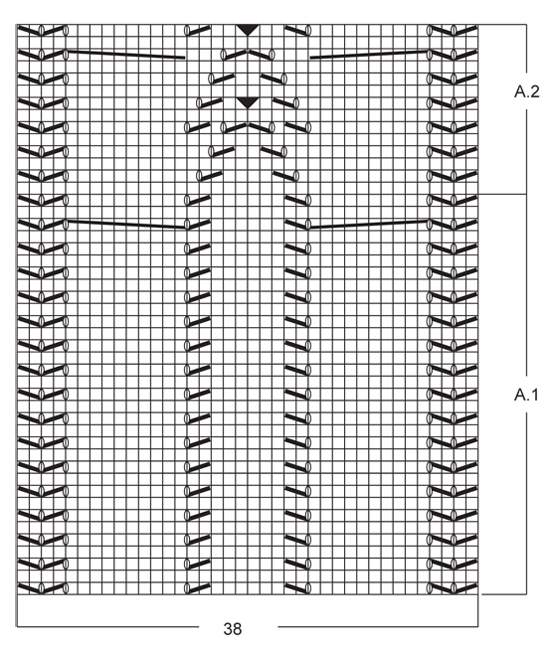
|
|||||||||||||||||||||||||

|
|||||||||||||||||||||||||
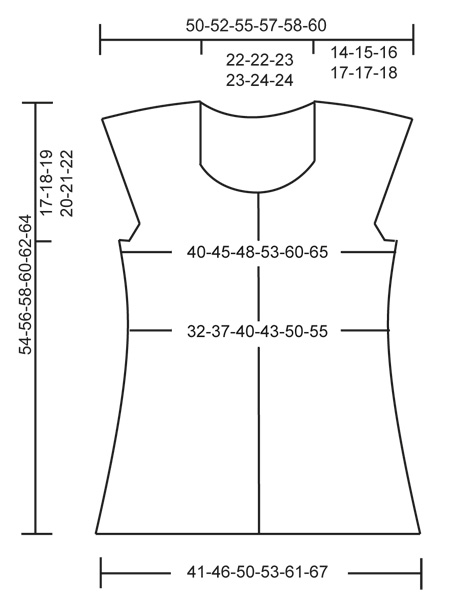
|
|||||||||||||||||||||||||
|
Have you made this or any other of our designs? Tag your pictures in social media with #dropsdesign so we can see them! Do you need help with this pattern?You'll find tutorial videos, a Comments/Questions area and more by visiting the pattern on garnstudio.com. © 1982-2024 DROPS Design A/S. We reserve all rights. This document, including all its sub-sections, has copyrights. Read more about what you can do with our patterns at the bottom of each pattern on our site. |
|||||||||||||||||||||||||












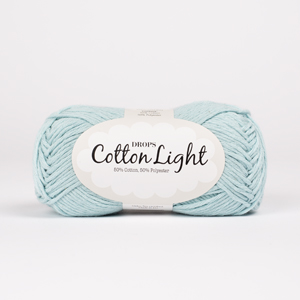















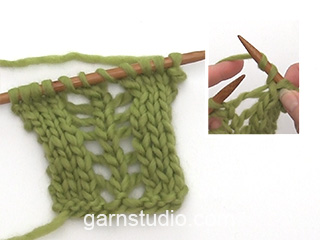





































Comments / Questions (32)
Bonjour, Je ne comprends pas comment au niveau de l'encolure on peut être à 42 cm de hauteur en taille M dans les demis-devant alors que l'on a tricoté déjà 38 cm avant les 13 augmentations (26 rangs en plus au total)? J'en suis à 52 cm après mes augmentations et je vais devoir rajouter une boutonnière du coup avant de rabattre... Est-ce qu'il n'y aurait pas une erreur?
05.05.2023 - 22:22DROPS Design answered:
Bonjour Laetitia, l'encolure se commence en taille M à 42 cm de hauteur totale: on tricote les 16 mailles de l'encolure au point mousse pendant 2 rangs et on rabat ensuite les 14 mailles de l'encolure, en même temps, continuez à augmenter sur le côté comme avant, ces augmentations se font sur le côté, elles n'influencent pas l'encolure. Bon tricot!
08.05.2023 - 07:38Hallo, ich habe die Anleitung erstmal gelesen und verstehe nicht, an welcher Stelle ich das Nadelspiel jeweils einsetzen soll, habe ich was übersehen? LG Gaby
25.01.2021 - 21:58DROPS Design answered:
Liebe Gaby, es sieht tatsächlich aus, daß die Nadelspiel nicht benutzt werden, danke für den Hinweis. Viel Spaß beim stricken!
26.01.2021 - 08:54Bonjour , Je suis au début de ce modèle ,très joli . Quand mon ouvrage mesure 6 cm , je n'ai pas terminé A1 , or l'explication me dit de placer les marqueurs et de tricoter A2 et de diminuer avant ou après les marqueurs. Dois-je commencer les diminutions alors que A1 n'est pas terminé ? Merci de votre réponse et de tous les beaux modèles que vous nous proposez. .
27.01.2019 - 16:24DROPS Design answered:
Bonjour Mme Gac, vous placez vos marqueurs à 6 cm pour commencer à diminuer mais continuez A.1 jusqu'à ce qu'il soit tricoté 1 fois en hauteur, puis vous tricoterez A.2 au-dessus de A.1. Bon tricot!
28.01.2019 - 11:30Järgmisel töö PP real kahanda 1 silmus enne 1. ja 3. SM-i ja pärast 2. ja 4. SM-i (= 4 kahandatud silmust) – vaata ülevalt, st. iga kahanduse vahel on 3 silmust kuni üles välja. Korda kasvatamist iga 1,5-1,5-1,4-1,4-1-1 cm järel veel 6-6-7-6-8-9 korda (= 7-7-8-7-9-10 korda kokku) Tekkis küsimus, kas kasvatada ja kahandada korraga? Ilma kasvatuseta jääb 164 s , koos kasvatusega 180? Kus ma valesti loen
27.09.2018 - 17:55DROPS Design answered:
Tere Annika! Viga on parandatud, Kahandamist tuleb korrata, mitte kasvatamist. Head kudumist!
14.10.2018 - 00:51Hej. Hvornår kommer der svar fra Design? Venter på at få strikket blusen færdig.
07.10.2015 - 08:07DROPS Design answered:
Hej Sussi, Nu endelig har vi fået tid til at se på den og der er lagt en rettelse ud. God dag!
29.02.2016 - 10:50Hej igen. Har lige et spørgsmål igen, som jeg regner med i kan svare på ved samme lejlighed. Hvordan kan der blive 212m efter udtagning i str. L. 178m + udt 6 gange (24m) + extra udt 3 gange (12m) = 214m. Er der fejl i opskriften eller kan jeg ikke regne?
19.08.2015 - 22:00DROPS Design answered:
Hej Sussi, Jeg får det også til 214 m, så jeg sender lige spørgsmålet videre til Design, så må vi se om vi tænker helt forkert :) Vi kommer tilbage!
21.08.2015 - 10:07Hej. Ved ekstra indtagning og udtagning på (2.-4. og 6. indt og udt) er det lige efter de 8p i A.5, eller er det efter A.5 og glatstrikmasker. Altså 1. mærketråd. På billedet ser det ud til at det er lige efter A.5, men hvis der skal strikkes 3m sammen må det være ved mæketråden??
14.08.2015 - 07:36DROPS Design answered:
Hej Sussi, De ekstra indtagninger sker ved at strikke 3 m sammen istedet for 2 sammen i hver side af A.2. God fornöjelse!
09.09.2015 - 08:13Creo que la explicación correspondiente al aumento de puntos en A4 está mal taducida. La frase en inglés dice "2 YO, on next row P 1st YO, P 2nd YO twisted" y se ha taducido como "tejer la primera hebra retorcida Y DEJAR la 2a hebra". Esto hace que el cómputo de puntos no sea correcto.
01.03.2014 - 17:26Hallo, konnten Sie Ihre Designerinnen fragen? Wie ist das nun mit A5? Hinreihen rechts, Rückreihe Muster? Bei den anderen ist Hinreihe Muster. Ines
18.02.2014 - 18:21DROPS Design answered:
Liebe Ines, das Diagramm A.5 wurde nun korrigiert, es war tatsächlich um eine Reihe "verschoben". Die Muster werden immer in Hin-R gestrickt, in den Rück-R werden alle M li gestrickt. Weiterhin gutes Gelingen!
19.02.2014 - 14:45Hallo, kann es sein das das angegebene Muster(Rücken) nicht dem Bild entspricht? VG Kerstin
18.02.2014 - 11:03DROPS Design answered:
Liebe Kerstin, Muster und Foto stimmen überein. A.2 wird nach A.1 fortlaufend wiederholt und A.2 passt zum Foto. Viel Spaß beim Stricken!
18.02.2014 - 12:59